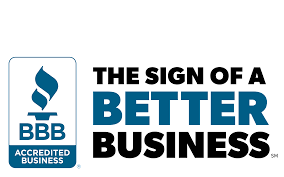Communities facing rising umbrella liability rates
April 7, 2024

As property insurance rates are somewhat stabilizing in 2022, umbrella liability rates continue rising for common interest communities.
Five years ago, many community associations were able to purchase umbrella liability limits as high as $50 million for a very economical price. In the past two years, insurance companies have reduced their limits to $5 million or have been forced to exit the market altogether. The very few remaining players have tightened their underwriting guidelines drastically, which has made many associations ineligible and has left insurance brokers fighting to replace coverage with the same expiring limits.
Following the tragedy last year in Surfside, Fla., board members have been more cautious regarding their personal liability and the potential impacts of their decisions for their communities. Logically, this is not the time to lower liability limits, but the current insurance market conditions have handicapped insurance brokers and carriers alike, preventing them from delivering the high umbrella limits seen five years ago. If high limits are secured, premium increases can vary 5–45%, and new exclusions may apply. Given the current conditions, umbrella coverage is becoming a must-have rather than optional.
Social inflation is one driving factor. A new phenomenon has emerged that is the result of a dramatic rise in litigation, along with astonishingly large payouts for bodily injury claims, also referred to as “nuclear verdicts.” This is primarily due to changes in societal perceptions and trends.
In recent years, insurance carriers have been paying for astronomical jury awards—some as high as $800 million—which has pressured them to modify the way that reserves are calculated to pay for future claims. Additional factors to consider are the lingering post-pandemic challenges related to supply chains and the increase in labor and material costs. This also is prolonging the time that insurance claims are open.
Litigation funding is another variable. This is a viable way for attorneys to pursue lawsuits where plaintiffs have limited resources. If a third-party investor evaluates a claim and anticipates a potential large payout, they will provide funds to plaintiffs, especially if it is against large companies or insurance companies defending their insured. In the past, individuals with limited resources would take the first offer to settle. However, having access to litigation funding allows them to drag cases out longer than needed with the frivolous intention of securing a larger payout.
This is a fast-emerging issue and is significantly affecting the insurance industry. Due to its profitability, the use of litigation funding is expected to continue growing.
There are only two states in the U.S. that have adopted new regulations that require plaintiffs to disclose if they are being supported by a third-party investor. The lack of disclosure laws is increasing the incentive for frivolous cases and is causing insurance companies to sustain higher claims expenses.
Insurance companies have incorporated new eligibility requirements to qualify for umbrella programs. The requirements include:
- A.M. best rating for underlying carriers: A-VI or better.
- Buildings older than 20 years should have a list of capital improvements.
- Fully sprinklered buildings.
- Events should not be open to nonmembers.
- Directors & officers liability with defense outside the limit.
Given the current challenges in the insurance landscape, it is imperative for community association board members and managers to partner with credentialed and experienced professionals who will guide them through this social inflation crisis and will help them mitigate liability claims. Insurance brokers who hold CAI’s CIRMS designation should be sought out. They are trusted advisors capable of shaping expectations and educating community associations, rather than simply brokering transactions. This year’s challenges will force insurance brokers to evolve, work smarter, and find creative solutions.








Leave a Reply